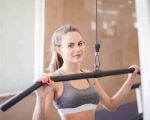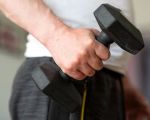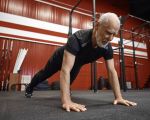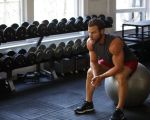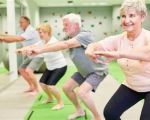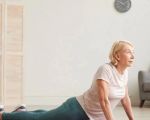- 1-Understanding-Shoulder-Strength-And-Its-Importance
- 2-Essential-Muscles-Targeted-In-Shoulder-Workouts
- 3-Effective-Gym-Workouts-For-Shoulder-Strength
- 4-Common-Mistakes-To-Avoid-During-Shoulder-Training
- 5-Expert-Tips-For-Optimal-Results-In-Shoulder-Strength
1. Understanding Shoulder Strength and Its Importance
Shoulder strength plays a crucial role not only in athletic performance but also in daily activities such as lifting, pushing, and pulling. Strong shoulders enhance overall upper body stability and reduce the risk of injuries, especially in the rotator cuff and surrounding muscles. Developing gym workouts for improving shoulder strength is essential for anyone aiming to boost functional fitness or achieve better aesthetics.
1.1 Why Shoulder Strength Matters
Beyond looks, well-conditioned shoulder muscles help stabilize the joints, improving posture and preventing common problems like impingement or tendonitis. For athletes, this strength translates to enhanced power in throwing, swimming, and weightlifting. For everyday fitness enthusiasts, it means safer and more effective training across various exercises.
1.2 Personal Experience Highlight
One fitness enthusiast shared how consistent focus on shoulder workouts improved not only his lifting capacity but also relieved chronic shoulder discomfort caused by poor posture from long hours at a desk job. This story emphasizes the broader benefits of targeted shoulder training beyond muscle size.
2. Essential Muscles Targeted in Shoulder Workouts
Understanding the anatomy of the shoulder helps in selecting the right exercises for balanced strength development. The key muscle groups include:
2.1 Deltoid Muscle
The deltoid is the primary shoulder muscle with three heads — anterior (front), lateral (middle), and posterior (rear). Effective gym workouts for improving shoulder strength must engage all three heads for overall development and stability.
2.2 Rotator Cuff
This group of four small muscles stabilizes the shoulder joint. Neglecting rotator cuff training can lead to imbalances and injuries. Incorporating rotator cuff exercises improves endurance and injury prevention.
2.3 Trapezius and Serratus Anterior
While not part of the shoulder itself, these muscles assist in shoulder movement and stability. A comprehensive shoulder routine will include exercises that engage these supporting muscles.
3. Effective Gym Workouts for Shoulder Strength
Implementing a structured workout plan can significantly improve shoulder power and resilience. Here are detailed exercises that target shoulder strength comprehensively:
3.1 Overhead Press Variations
The overhead press, whether with dumbbells or a barbell, is a foundational gym workout for improving shoulder strength. It primarily targets the anterior and lateral deltoids while engaging the triceps and upper chest. Proper form is key—keeping a neutral spine and avoiding excessive arching helps prevent injury.
3.2 Lateral Raises
Lateral raises isolate the middle deltoid head and are excellent for building shoulder width. Use moderate weights to maintain form, focusing on controlled movements to maximize muscle activation.
3.3 Face Pulls
This exercise targets the posterior deltoids and the rotator cuff, helping correct muscular imbalances common among gym-goers. Using a cable machine or resistance bands, face pulls improve posture and shoulder health.
3.4 Dumbbell Front Raises
To emphasize the anterior deltoid, dumbbell front raises can be added. They improve shoulder endurance and contribute to a well-rounded upper body appearance.
3.5 Incorporating Functional Movements
Exercises like Turkish get-ups and kettlebell swings challenge shoulder stability dynamically, complementing traditional strength training with real-world movement patterns.
To explore high-quality equipment and expert workout plans, Fitness offers curated recommendations that suit various fitness levels and goals.
4. Common Mistakes to Avoid During Shoulder Training
Even the best gym workouts for improving shoulder strength can fall short if performed incorrectly. Here are frequent pitfalls and how to avoid them:
4.1 Overloading Too Soon
Many lifters rush to lift heavy weights, compromising form. This increases injury risk and stalls progress. Gradually increase weight while prioritizing control and range of motion.
4.2 Neglecting Warm-up and Mobility
Skipping warm-ups can cause tightness and strain. Dynamic stretches and light resistance exercises prepare muscles and joints for heavier loads.
4.3 Ignoring the Rear Deltoid
A common mistake is focusing too much on the front and side delts, neglecting the rear delts. Balanced training prevents muscular imbalances that lead to shoulder pain.
5. Expert Tips for Optimal Results in Shoulder Strength
To maximize gains and maintain shoulder health, consider these professional recommendations:
5.1 Prioritize Quality Over Quantity
Focus on slow, controlled reps rather than rushing through sets. Mind-muscle connection improves recruitment and results.
5.2 Integrate Recovery and Flexibility Work
Shoulders are prone to overuse injuries. Incorporate stretching, foam rolling, and rest days to allow muscles and tendons to recover fully.
5.3 Track Progress and Adjust Workouts
Keep a training journal noting weights, reps, and any discomfort. Adjust workouts based on progress and feedback from your body.
One fitness trainer shared how adding face pulls and rotator cuff exercises into his clients’ gym workouts for improving shoulder strength dramatically reduced shoulder pain and improved overhead performance within weeks. This highlights the importance of a balanced and mindful approach to shoulder training.


